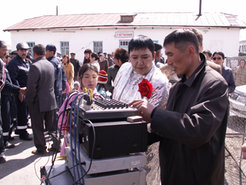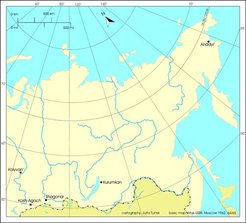"Social Significance of the House of Culture" – a comparative research project

The “House of Culture” used to be a key institution for cultural activities and for the implementation of state cultural policies in all socialist states. In the post-socialist years the “Houses of Culture” underwent a deep economic and symbolic crisis, with many of them ultimately being closed down. Only recently have there been signs of a re-orientation concerning the missions and the programmes of the “Houses of Culture”. The goal of this project is to determine the new functions and meanings of these institutions for the communities that they are meant to serve. The project is based on the hypothesis that the “Houses of Culture” no longer appeal to parts of the local communities, which are more attracted to new (often commercial) forms of leisure and creative self-expression. However, in many cases the “Houses of Culture” continue to play a pivotal role in the social and cultural life of the community, particularly, as one may postulate, in less central places (in rural areas) and among less well-off people. Researchers will investigate the social networks of the employees and visitors of the “Houses of Culture” and analyse who uses these institutions and for what purposes. At the same time, research will disclose who does not participate in the activities, and possibly reveal structural mismatches between the concepts and targets of the “House of Culture” and its actual performance in a changing social setting. As an applied outcome of the project, researchers will present the results of their work to the respective “House of Culture”, so that the latter and the local authorities can use them for future work. The comparative research project is a collaborative effort of members of the Siberian Studies Centre of the MPI for Social Anthropology, in co-operation with the Siberian Branch of the Russian Academy of Sciences. Fieldwork (interviews, surveys, participant observation) was conducted by MPI researchers and local field assistants in five different locations in spring 2006 (see table below). A workshop in September 2007 in Halle served as a forum for discussing the preliminary results of the project. Project results will be presented in book format in 2011.
| Fieldwork location | Researcher and assistant(s) |
|
Anadyr’ |
|
|
Kolyvan’ |
Joachim Otto Habeck (MPI) |
|
Kosh-Agach |
Agnieszka Halemba (MPI) |
|
Kurumkan |
István Sántha (MPI) |
|
Shagonar |
Brian Donahue (MPI) |
|
Project co-ordination and support |
|
|
Co-ordination |
Joachim Otto Habeck (MPI) |
|
Scientific co-ordination in Russia |
Yurii Popkov (Institut filosofii i prava, Sibirskoe Otdelenie Rossiiskoi Akademii Nauk, Novosibirsk) |
|
Participation in methodology design |
Katharina Gernet (MPI) |
|
SPSS-data-analysis |
Siegfried Gruber (MPI for Demographic Research, Rostock) |
|
Data processing |
Georgi Dietzsch |


